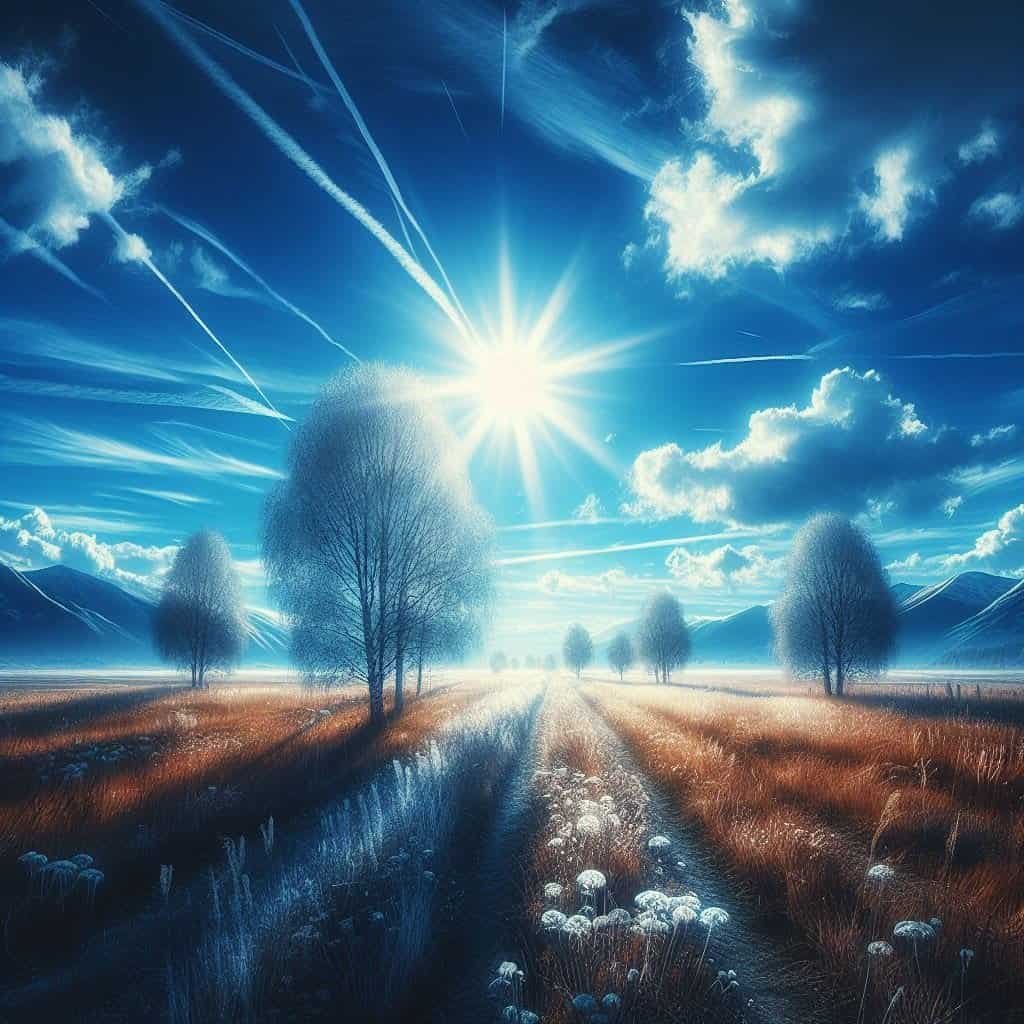
As we gaze up into the vast expanse above us, one question that has piqued the curiosity of humans throughout the ages is why the sky appears blue. The answer to this seemingly simple question lies in the fascinating phenomenon of Rayleigh scattering. So, grab your shades, and let’s embark on a journey to unravel the mysteries of nature’s canvas.
Understanding Rayleigh Scattering
To comprehend the reason behind the blue hue of the sky, we must first delve into the world of physics. Rayleigh scattering, named after Lord Rayleigh, is the scattering of light by particles smaller than the wavelength of the light itself. In the case of our atmosphere, tiny molecules of nitrogen and oxygen scatter sunlight in all directions.
The Science Behind the Spectacle
When sunlight enters Earth’s atmosphere, it contains a spectrum of colors ranging from red to violet. Each color corresponds to a different wavelength, with red having the longest wavelength and violet the shortest. The shorter wavelengths of light, such as blue and violet, are scattered more by the molecules in the atmosphere due to their smaller size.
The Sky’s Palette
As the sunlight travels through the atmosphere, the blue and violet wavelengths are scattered in all directions, creating a stunning spectacle of a blue sky. This scattering process is more pronounced in the daytime when the sun is high in the sky, as the light has to traverse a larger portion of the atmosphere.
The Twilight Transformation
During sunrise and sunset, the sky takes on a different palette, adorned with hues of red, orange, and pink. This captivating transformation occurs due to a phenomenon known as the Tyndall effect. As the sun’s position changes, the sunlight has to pass through a larger thickness of the atmosphere, causing more scattering of the shorter wavelengths. The longer wavelengths, such as red and orange, are less prone to scattering, resulting in the warm and vibrant colors we witness during twilight.
Factors Influencing Sky Color
While the sky’s default hue is typically blue, several factors can influence its color, creating mesmerizing variations. One such factor is the presence of particles and pollutants in the atmosphere. Dust, smoke, and other airborne particles can scatter different wavelengths of light, altering the color of the sky. For instance, when volcanic eruptions release large amounts of ash into the atmosphere, the sky can appear hazy and take on a grayish tint.
Beyond the Blue
Interestingly, the sky can exhibit colors other than blue on rare occasions. For example, in certain parts of the world, such as the Arctic and Antarctic regions, the sky can appear pink or green, giving rise to the phenomenon known as polar lights or auroras. These captivating light displays occur when charged particles from the Sun collide with atoms and molecules in Earth’s atmosphere, causing them to emit colorful light.
The Sky’s Influence on Human Perception
The enchanting beauty of the blue sky has long captivated human imagination and influenced various aspects of our lives. From art and literature to fashion and design, the sky’s color has left an indelible mark on human creativity. The serene blue hue has been associated with tranquility, freedom, and inspiration, shaping our perception of the world around us.
Cultural Interpretations
The significance of the sky’s color extends beyond the realms of science and art. Various cultures and civilizations throughout history have attributed symbolic meanings to the sky’s hues. In ancient Greek mythology, for example, the sky was personified as Uranus, the divine personification of the heavens. In Chinese culture, the color blue represents immortality and is associated with the heavens and the divine.
Conclusion
So, the next time you find yourself gazing at the sky, take a moment to appreciate the wonders of Rayleigh scattering and the science behind the blue hue above. From the captivating colors of sunrise and sunset to the breathtaking displays of auroras, the sky continues to remind us of the immense beauty and complexity of the natural world. Embrace the enchanting canvas above, for the sky’s true beauty lies not only in its color but also in the mysteries it holds.





